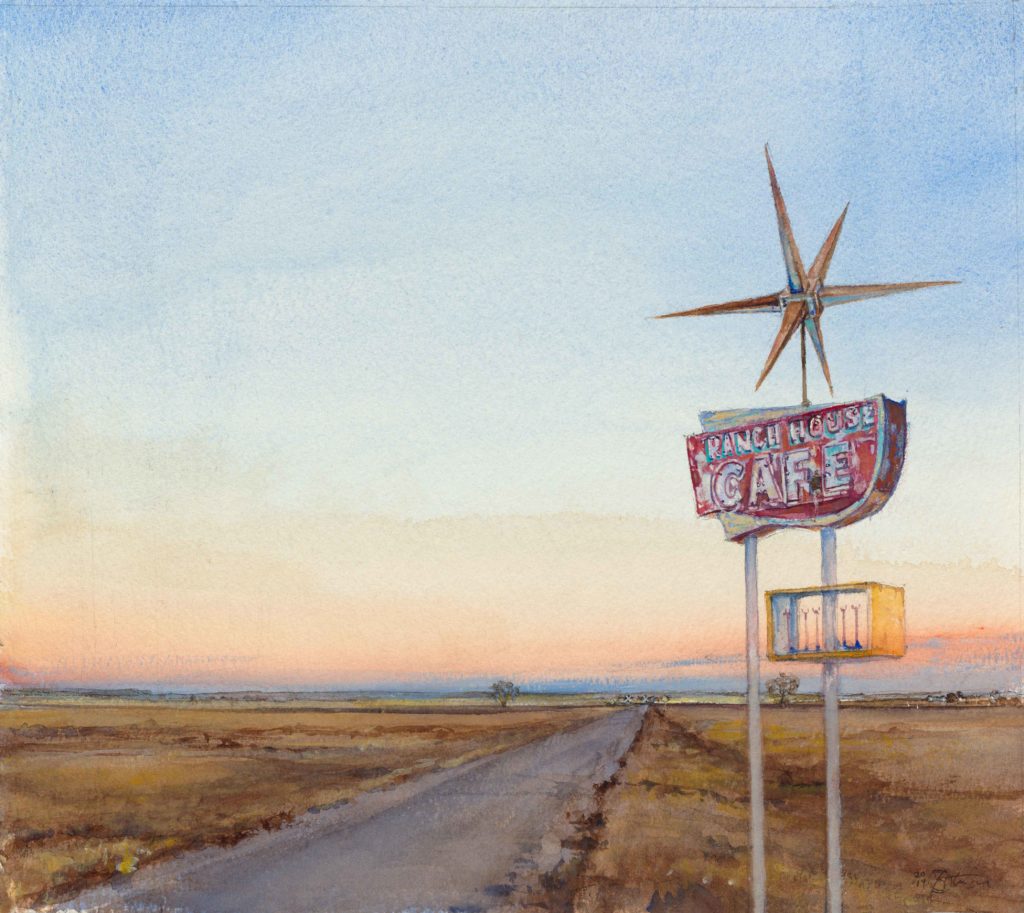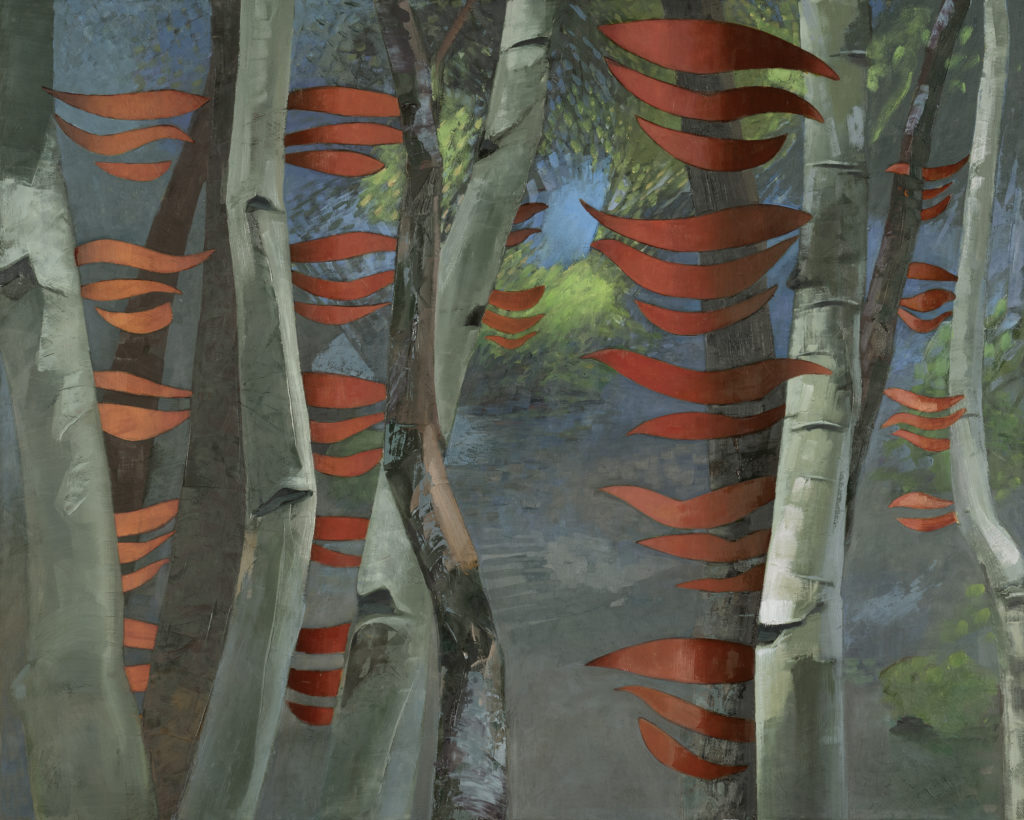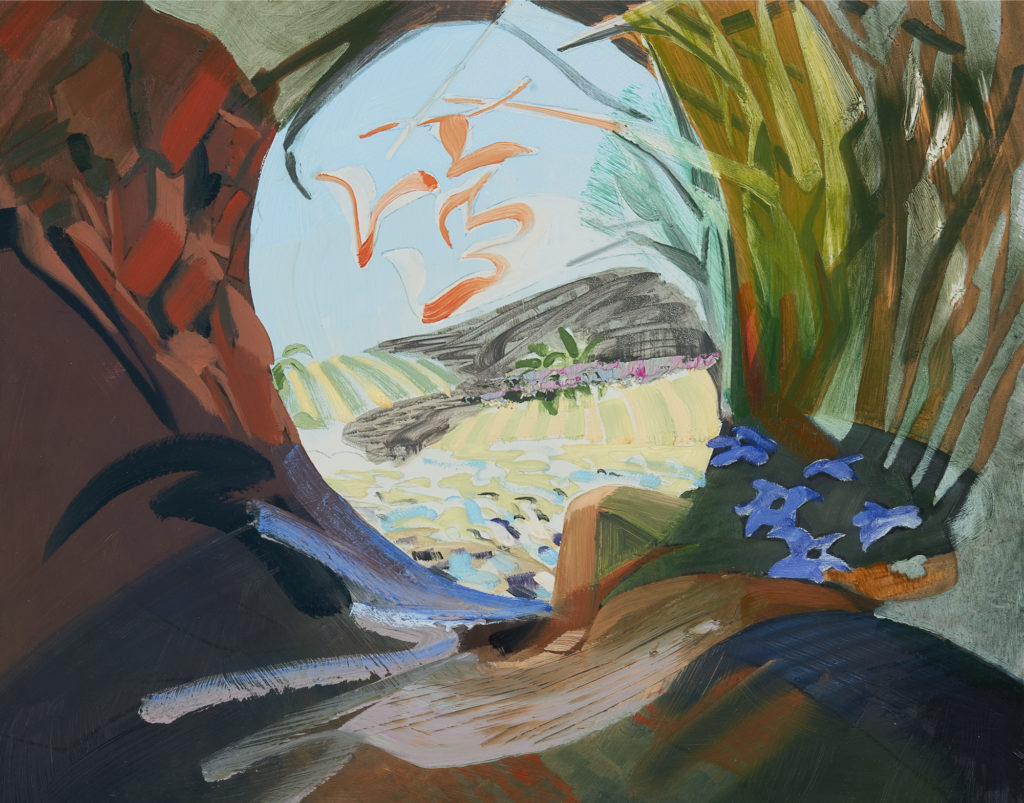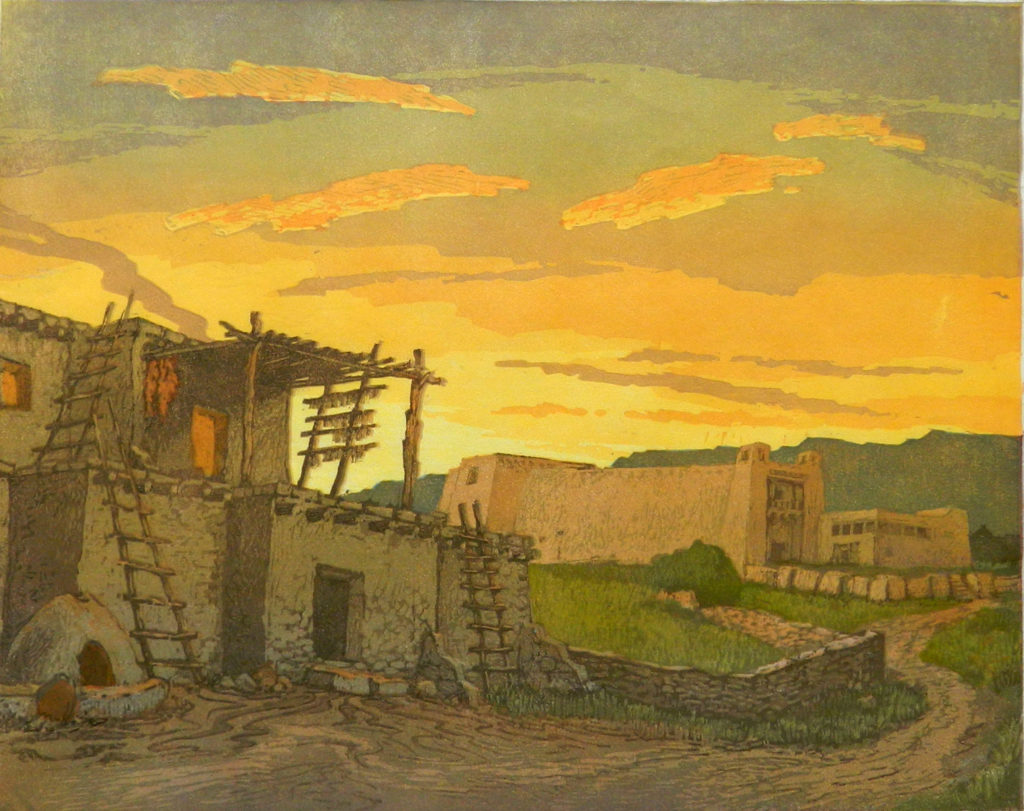Santa Fe, New Mexico, through August 3, 2019
Gerald Peters Gallery has organized the exhibition “Re-Imagining New Mexico: Works by Mike Glier, Leon Loughridge, James McElhinney, and Don Stinson.” Its wide-ranging images offer fresh perspectives on “The Land of Enchantment.”


Don Stinson continues his exploration of the physical and cultural landscapes of the American West. Casting a subtle, discerning eye on visions of landscape at the start of the twenty-first century, Stinson’s work asks the viewer to consider the tension between the West we live in and the mythic West of the imagination.
“The sites I find ripe with contemporary meaning exist not in the national parks or wilderness areas, but on the edges and around the fringes of those great reserves of beauty and wonder. These other, less privileged, places — places by the side of the road when you leave the park, places altered by the necessity of use, shaped or misshapen by a growing human presence — are to me more poignant, more compelling by how visibly we have changed them.”


Mike Glier is a peripatetic artist whose work describes a fluid, evolving exchange with the natural world. Working “en plein air,” his recent paintings draw on all five senses to record the complex experience of moving through the New Mexico landscape. For this exhibition, his sixth with the gallery, Glier visualizes the smell of juniper trees, the chatter of birds, the growl of a bear, the roar of the wind, and the profound babble of water flowing through acequias in the Santa Fe and Taos regions. Rendering non-visual sensory and perceptual experiences in a visual vocabulary, Glier discovers unexpected shapes, fresh color chords, and surprising compositions that slip easily between representation and abstraction.
“I’m one of those artists-from-elsewhere, who returns time and again to New Mexico to record the beauty of the place and the joy of being in it. In the last few years, I’ve been trying to use all of my senses to record my experience of the place and to translate not only what I’m seeing but also what I hear, what I feel on my skin, and even what I smell, into visual imagery.”


The work of Leon Loughridge focuses on iconic sites in New Mexico reimagined through the prism of family stories and childhood memories. His watercolors, woodblock prints, and serigraphs capture the mystery and magic of New Mexico’s storied past, as well as his family’s history — and his own personal story.
“The awe-inspiring places in this exhibit represent my spiritual roots. I have been steeped in Southwestern history since my childhood. There were the magical trips in search of rumored and remote historic sites, abandoned pueblos, Spanish missions, obsidian quarries, and turquoise mines. Around the dinner table my family would tell, retell, and embellish stories about the Southwest. This constant exposure nurtured a deep feeling for the region’s majestic landscapes and indigenous cultures.”

New to the gallery, James McElhinney is an author, visual artist, oral historian, independent scholar, and publisher. Turning his attention to the Rio Grande, McElhinney followed the historic river across New Mexico, collecting images and stories along the way. From these materials, he developed a suite of paintings and color intaglio prints, adding to the growing conversation around one of America’s greatest waterways. In addition, McElhinney will present a new limited edition of archival pigment prints drawn from the pages of his painting journal “Grand River Sketchbook.”
“To understand landscape, one must know one’s location and study the terrain, considering the process of nature and human activity that modifies the terrain over time. Drawing and painting provide me with modes of engagement, and the means to develop sensory experience into a species of knowledge that gives rise to ideas. The hope is that my efforts will inspire others to explore their own homes, settlements, lands and waterways, to discover these wonders anew, perhaps with a sketchbook in hand.”
Learn more about this exhibition at gpgallery.com.
Sign up to receive Fine Art Today, the free weekly e-newsletter from
Fine Art Connoisseur magazine.







